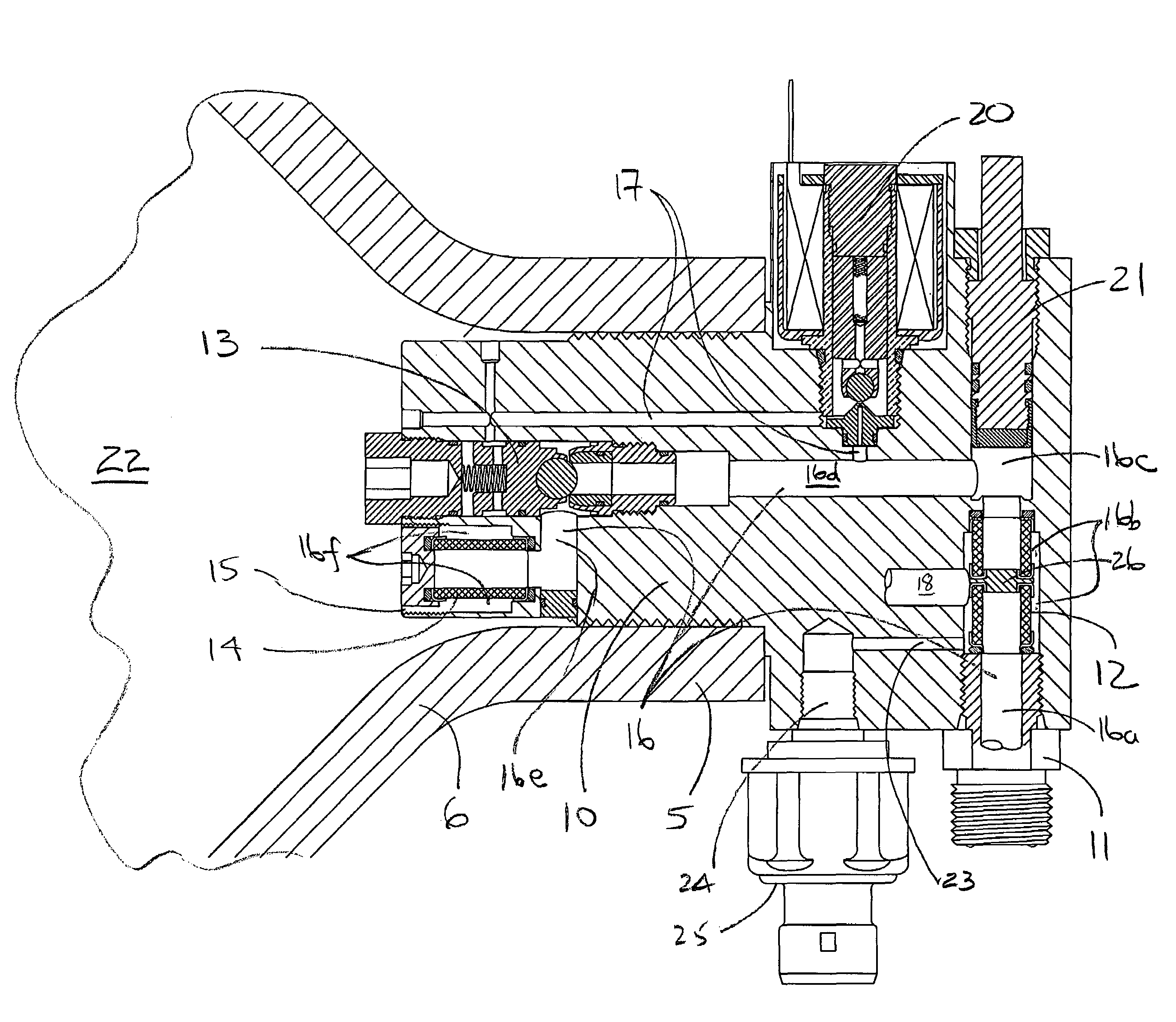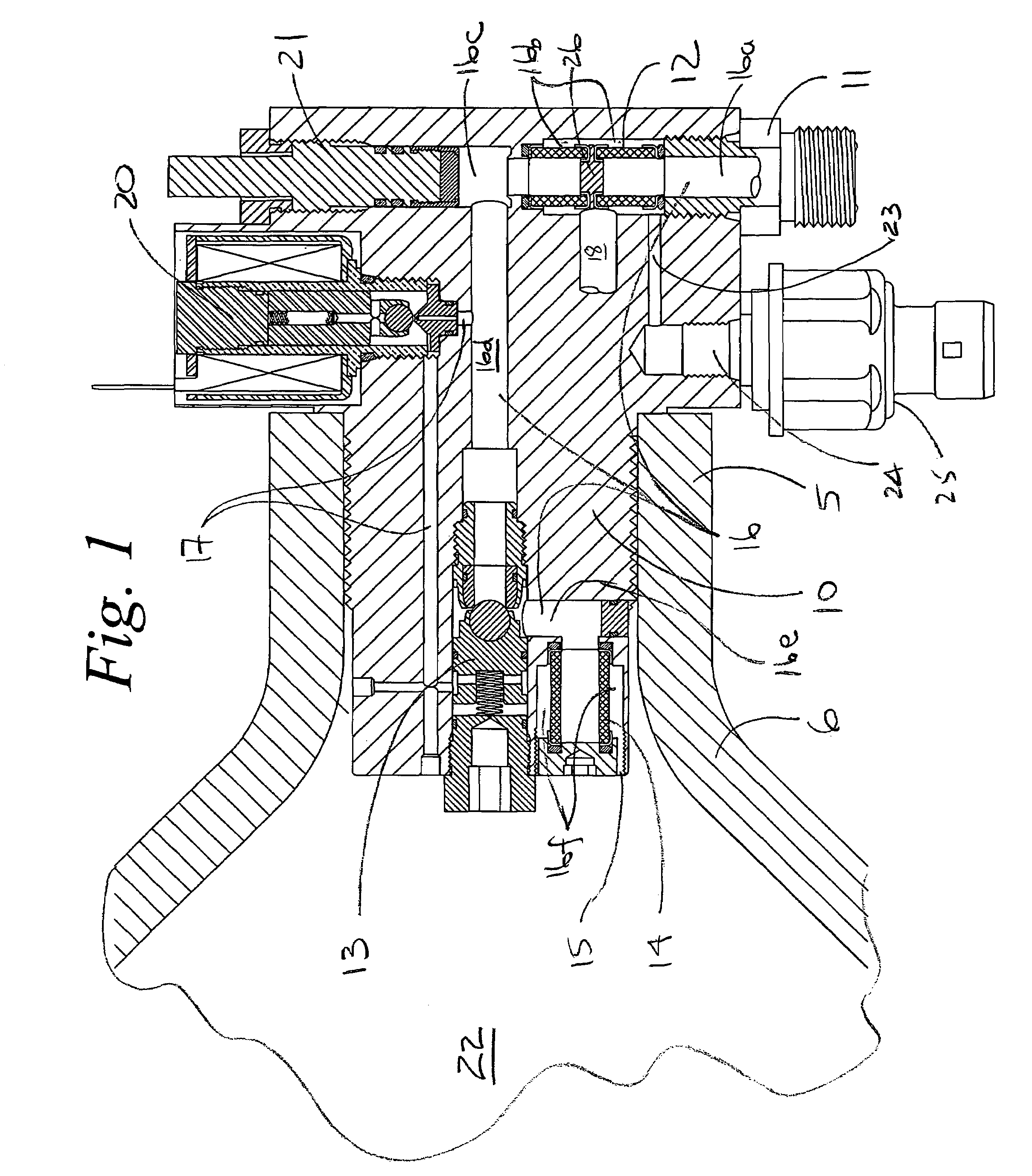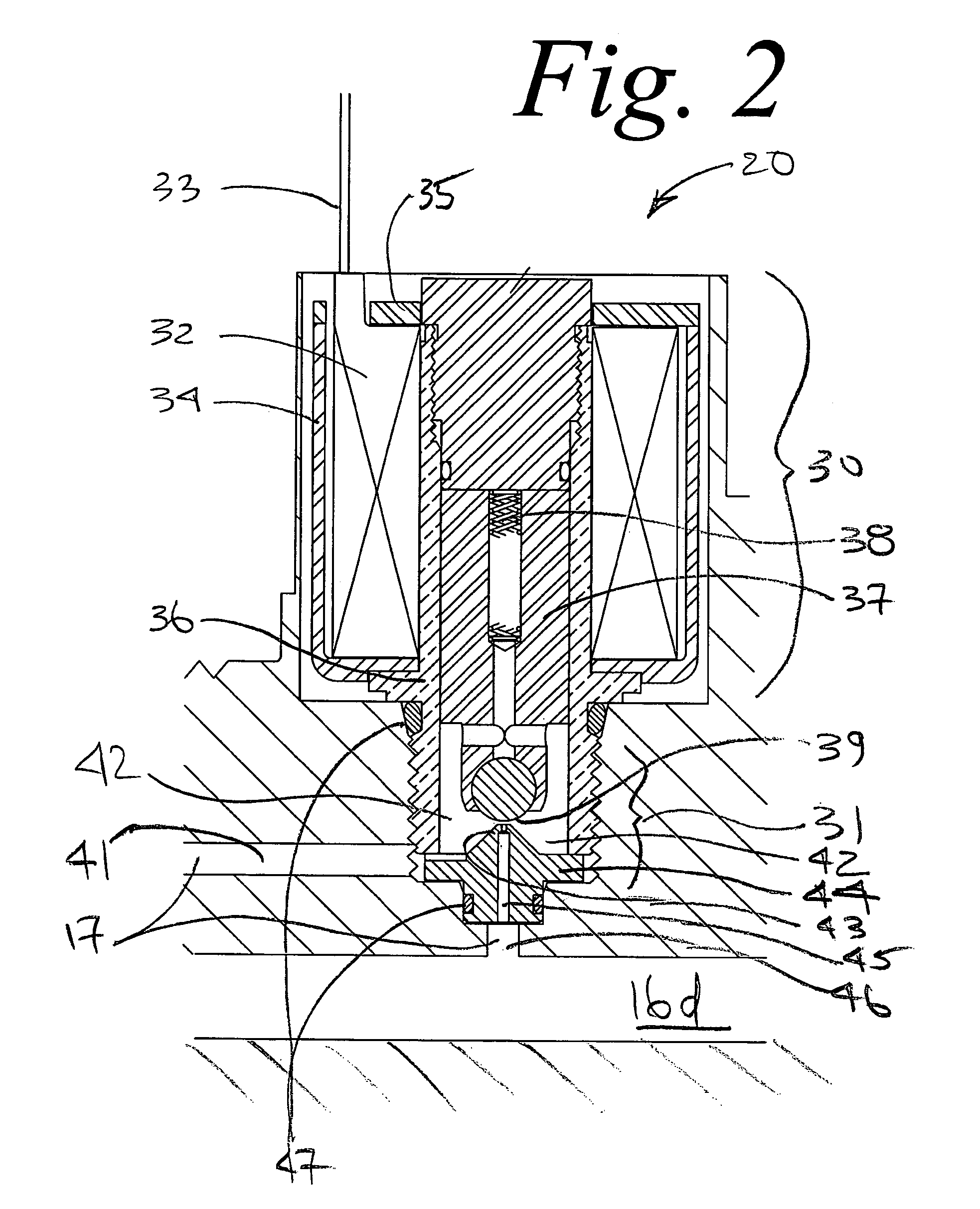Flow control system for a valve
a flow control system and valve technology, applied in the direction of braking systems, gas/liquid distribution and storage, vessel construction details, etc., can solve the problems of affecting the sealing effect of the valve, the valve can be subjected to extremely demanding performance expectations, and the problem of contamination may com
- Summary
- Abstract
- Description
- Claims
- Application Information
AI Technical Summary
Benefits of technology
Problems solved by technology
Method used
Image
Examples
Embodiment Construction
[0033]Embodiments of a flow control system for a valve are illustrated in the context of an in-cylinder control valve. Often a pressure regulator is also associated with the valve but is not illustrated in this case for a matter of some clarity. Further, the system is equally applicable to in-line remote valves which are not directly attached to the cylinder. Fluid under various pressure conditions from a first pressure area is directed bi-directionally to and from a second pressure area at various pressure conditions. In the particular embodiment shown, fluid is directed through the valve, into the cylinder (such as to fill the cylinder for storage) and withdrawn through the valve (such as for use or consumption).
[0034]With reference to FIG. 1, a flow control system is embodied in a valve body 10 installed in a structure such as the neck 5 of a high pressure cylinder 6. The valve body 10 comprises a first opening or inlet 11, an first inlet filter 12, a shuttle valve 13, and a seco...
PUM
 Login to View More
Login to View More Abstract
Description
Claims
Application Information
 Login to View More
Login to View More - R&D
- Intellectual Property
- Life Sciences
- Materials
- Tech Scout
- Unparalleled Data Quality
- Higher Quality Content
- 60% Fewer Hallucinations
Browse by: Latest US Patents, China's latest patents, Technical Efficacy Thesaurus, Application Domain, Technology Topic, Popular Technical Reports.
© 2025 PatSnap. All rights reserved.Legal|Privacy policy|Modern Slavery Act Transparency Statement|Sitemap|About US| Contact US: help@patsnap.com



